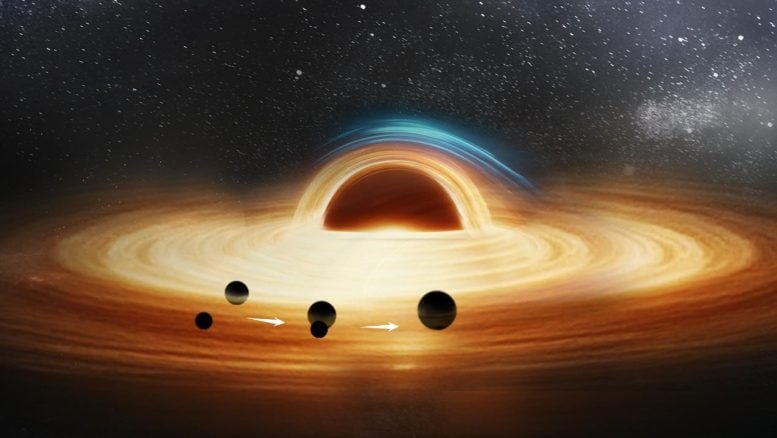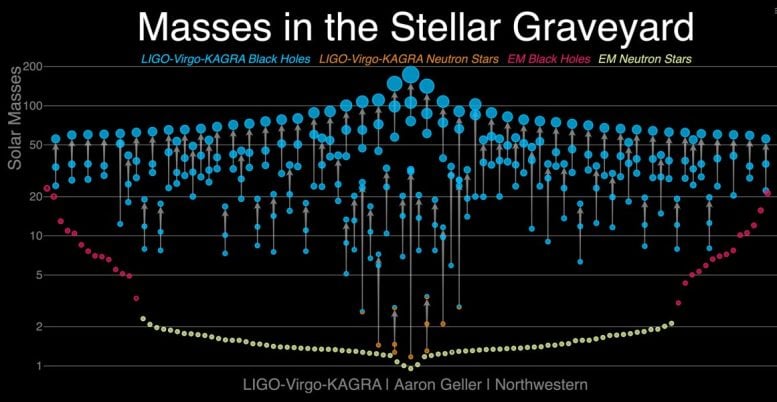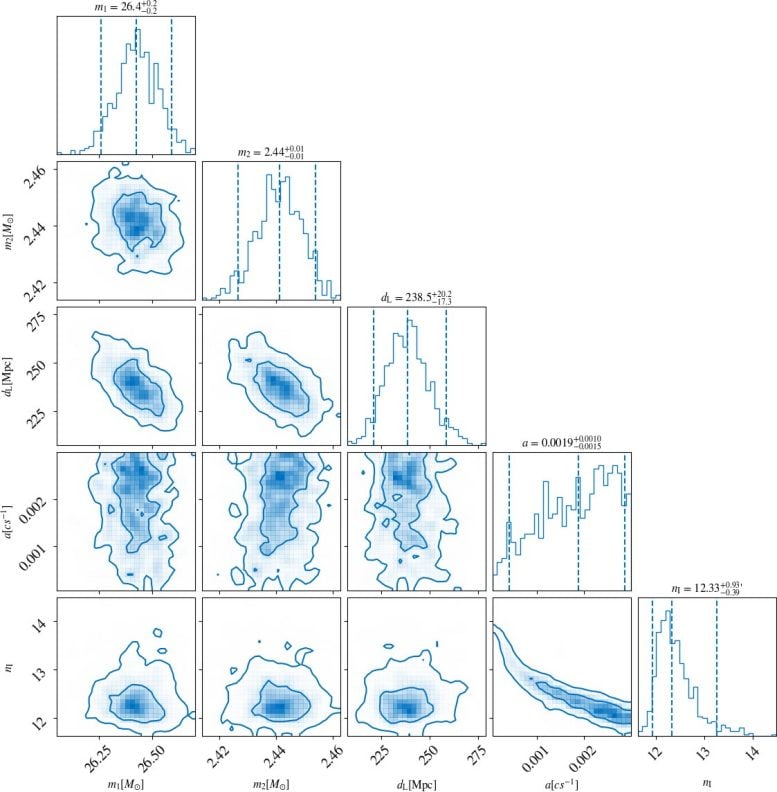
GW190814’s gravitational waves suggest a hidden supermassive black hole nearby. The finding reshapes how binary black holes may form.
Binary black holes are already among the universe’s most extraordinary phenomena, but scientists at the Shanghai Astronomical Observatory (SHAO) of the Chinese Academy of Sciences have uncovered evidence suggesting they might not exist in isolation. Instead, some of these systems could be influenced by an even more enigmatic presence—a massive companion hidden nearby.
A research group led by Dr. Wenbiao Han at SHAO recently reported strong indications that the binary black hole merger event GW190814 likely unfolded within the gravitational influence of a third compact object, which may have been a supermassive black hole.
This finding, recently published in The Astrophysical Journal Letters, provides new clues to unraveling the mystery of binary black hole formation.

Gravitational wave events and open questions
Since gravitational waves were first detected in 2015, the LIGO-Virgo-KAGRA collaboration has recorded more than 100 such events, the majority arising from binary black hole mergers. These discoveries have greatly advanced knowledge of the physics governing black hole mergers, though the processes driving their origin and development are still not fully understood.
Dr. Han’s group had earlier introduced the “b-EMRI” model, which describes a scenario where a supermassive black hole captures a binary black hole, forming a hierarchical triple system. In this configuration, the binary pair orbits the supermassive black hole, producing gravitational waves across several frequency ranges. The model was later featured in LISA’s white paper and identified as a unique target for China’s upcoming space-based gravitational wave observatories. Since then, the researchers have been searching LIGO-Virgo data for signs of mergers taking place near supermassive black holes.
Investigating GW190814’s unusual pairing
When analyzing the event GW190814, the team noted that its two merging black holes had a strikingly uneven mass ratio, close to 10:1. According to co-author Dr. Shucheng Yang, such an imbalance points to the likelihood that the pair once belonged to a triple system with a supermassive black hole, which slowly drew them together through gravitational interactions. Another possibility is that they developed within the accretion disk of an active galactic nucleus, brought together by the gravitational pull of nearby compact objects until they eventually merged.

The researchers observed that if a binary black hole merges near a third compact object, the orbital motion around the third object would produce a line-of-sight acceleration—an acceleration along the observer’s line of sight. This acceleration would alter the gravitational wave frequency through the Doppler effect, leaving a distinct “fingerprint” in the signal.
Detecting line-of-sight acceleration
To detect this signature, they developed a gravitational waveform template incorporating line-of-sight acceleration and applied Bayesian inference to analyze several high signal-to-noise binary black hole events. The results showed that for GW190814, the model with line-of-sight acceleration significantly outperformed the traditional “isolated binary black hole” model. The line-of-sight acceleration was estimated at approximately 0.002 c s-1 (90% confidence level, where *c* is the speed of light), with a Bayesian factor (a measure of model credibility) of 58:1, strongly supporting the conclusion that line-of-sight acceleration was present.
“This is the first international discovery of clear evidence for a third compact object in a binary black hole merger event,” said Dr. HAN. “It reveals that the binary black holes in GW190814 may not have formed in isolation but were part of a more complex gravitational system, offering significant insights into the formation pathways of binary black holes.”
With the next generation of ground-based gravitational wave detectors (e.g., Einstein Telescope, Cosmic Explorer) and space-based detectors (e.g., LISA, Taiji, TianQin) coming online, scientists will be able to capture subtle variations in gravitational wave signals with even greater precision. Future observations may reveal more events like GW190814, helping humanity better understand the formation and evolution of binary black holes.
Reference: “Indication for a Compact Object Next to a LIGO–Virgo Binary Black Hole Merger” by Shu-Cheng Yang, Wen-Biao Han, Hiromichi Tagawa, Song Li and Chen Zhang, 21 July 2025, The Astrophysical Journal Letters.
DOI: 10.3847/2041-8213/adeaad
Never miss a breakthrough: Join the SciTechDaily newsletter.